This blog was first posted for Blue Jersey on Monday, September 29, 2014.
This year our country commemorated the 60th Anniversary of the groundbreaking ruling of Brown vs. Topeka Board of Education. With it, many studies that were released explicated the United States is just as segregated today if not more, than we were then. So it’s official; apartheid schooling in the United States never subsided. In fact, a recent UCLA and Rutgers study detailed the presence and impact of New Jersey’s apartheid and severely segregated schools. What this study tells us is apartheid schooling is the civil rights issue of our time because it never ended; people were just able to find more clever and covert ways around discriminating against people of color. In fact, since Brown v. BOE, black teachers have steadily declined. Prior to Brown v. BOE, black teachers made up about 16 percent of the teaching force. Now, black teachers make up about six percent. How can that be? Well, systemic racism is the short answer. The long answer? Well, systemic racism.
Racism is a tough topic for many people in this country because of the ugly history and present manifestations make white people uncomfortable. Many feel it is unfair that they must feel uneasy about something in which they do not think they actively participate. However, silence and turning a blind eye to issues that relate to racism and other forms of oppression makes one complicit. When people and organizations fail to fully explore the ways in which they perpetuate racist systems it makes them an active participant. So yes, nice people, and good organizations do racist things. The thing about racism is that it is so insidious, and so inherent in the very fabric and DNA of this country that there is no way to circumvent being an active target, or beneficiary and participant. On the bright side, there are ways to interrupt and disrupt oppression, and that involves actively listening, and engaging in anti-oppression analysis and discourse with people of color.
So on Saturday, September 13, 2014 when the New Jersey Education Association (NJEA) chose to gather edu-bloggers/advocates for a meeting with the National Education Association’s new president Lily Eskelsen Garcia, I was disappointed to see a nearly all white-presenting group of people. What happened to the teachers/edu-bloggers and advocates of color? Where are their voices in this? And why didn’t anyone question this while they were there meeting with the first Latinx president of the NEA? No one can tell me they can look at those who were invited, represented in that meeting, and in that room and then tell me white supremacy was not rearing its ugly head. Someone may say, “Well, there was one person of color.” Well, I am less concerned about the quantity to prove or disprove my observation. I am more interested in honoring the stories and voices that so often get silenced or outright ignored. That did not happen then.
The thing about inviting a diverse group of people to the table is you get diverse ideas, diverse histories, and diverse experiences that cannot be communicated by those who do not live or experience them. Renowned author Chimamanda Ngozi Adichie refers to this in her esteemed TED Talk, “The Danger of a Single Story”. The danger of lifting up some above others (whether consciously or not) continues to perpetuate systems-oppressive systems. Inviting a diverse group of people will also help everyone walk away from the experience with a more diverse understanding of the way they see the world. You also get to disrupt oppression by granting access to spaces that are traditionally and historically denied to people of color in mainly color-blind ways.
Do teachers of color who are also doing advocacy work and organizing need to blog just to be seen and heard? If that is the case, then not only is it the responsibility of teachers of color to bare the burden of racism on our backs but we must bare the responsibility of being seen, heard, and also remind people to see our humanity. Apparently, we must commit our lives to racism-servitude, constantly be rejected and bare this pain for the learning benefit of white people. Isn’t our humanity a given? We see our humanity, why is it our responsibility to also teach people who are capable of learning on their own to also see it? Why must we work extra hard to be visible? And just because people are not witnessing these conversations in the format or mainstream ways in which they would like to see them happening, does not mean these conversations and dialogues are not happening. I can assure you they are happening. The onus should not be on teachers of color to gain access because they are already doing everything to gain access, but are implicitly told we cannot without visibility. The responsibility is on the NJEA and our white colleagues who consider themselves our fellow supporters, not for accolades and recognition, but because it is the right thing to do.
I remember the first time reading Peggy Macintosh’s article, White Privilege: Unpacking the Invisible Knapsack, and thinking to myself, “I already know this. Do my white colleagues realize this?” Thanks to the generous gift and partnership of the Kellogg Foundation and the National Seeking Educational Equity and Diversity (SEED) Project, this summer I was afforded the opportunity to hear Macintosh speak to this, even act it out in humorous ways. However, does the union I navigate within this educational system understand this concept? Do the edu-bloggers and advocates who write about and speak against our Governor’s racist education policies, see how they are complicit in racism? Have they even explored how they help perpetuate it? If not, then it is time they all intentionally make this their personal learning and action goal this year. With privilege comes a special power people of color are not granted, and until that is realized, we will be navigating through our society blindly.
In a racially just world, I would not have to write this piece to demand visibility and voice. In a racially just world, one of my “comrades” in this struggle would have said, “Hey, did the NJEA invite (fill in the blank with multiple edu-bloggers/advocates of color).” In a racially just world, someone else would address it before I had to draw attention to it. And in a racially just world, telling teachers of color they should blog more in order to be heard would never happen because we would be heard. People would understand that just because they do not witness conversations happening (or see a blog about it), does not mean they are not happening.
In many ways teachers and students of color, especially in urban districts are being hit the hardest. School closures, co-locations, charters, turnaround schools, and divestment of resources and funds disproportionately impact black and Latinx students. There are experiences that teachers of color encounter that cannot be experienced by white teachers even if they are in the same district and/school. Although they may witness racism, they do not have to worry about experiencing it.
For a little over ten years, I worked as a teacher in an urban high school in Jersey City, that later became a turnaround school toward the end of my tenure there. Unfortunately, black teachers were impacted more by the School Improvement Grant’s turnaround model. The district involuntarily transferred many teachers, many of them black, to other schools and replaced them with predominantly white teachers. This act implicitly posits that black teachers are not qualified or capable to educate students, and white teachers are better suited for the job. No one came out and outright said this, but the actions of the school and district did.
Not surprisingly, this was a trend that we have seen in our country before. Soon after the courts passed Brown vs. BOE black teachers were forced out of their jobs. Even then, black teachers in the South petitioned the NEA to see them and help protect them from mass firings. Since the ruling, we have seen a consistent decline in black teachers. Many lost their jobs because their segregated schools were closed, and could not find work in the integrated schools; they were considered less desirable than white teachers even though most of them had a master’s degree.
In the first year of the turnaround, I distinctly remember a student asking me, “Ms. Aryee-Price, do you realize that you are my only black teacher? All of my other teachers are white.” As the coordinator for the English department, I remember returning after the summer break and realizing I was the only black teacher in the department. Disturbed by this revelation, I mentioned to one of our vice principals, “You mean to tell me there were no qualified black teachers that could have been hired? None?” The next school year, the administration hired one black teacher and one Afro-Latinx teacher for the English department. I say all of this to show, the more we pretend as if racism is not a problem, continue to operate with a color-blind mindset, the more teachers of color will be disproportionately affected by color-blind policies, and invisibilized by our union.
We must be clear that navigating this world with a color-blind “I don’t see color” mentality has never helped us create a racially just society. We must be intentional in our actions and consciously push back against systems of oppression; otherwise we give way to the systems we have inherently been conditioned to perpetuate. Unfortunately, teacher-training programs do not consistently tackle these important issues in meaningful ways that will help us undo and disrupt racism and other forms of oppression, and neither do our union. It is not enough to be social-justice aligned; we must be critical in our social justice. I am not talking about a one time training session. I am talking about something consistent and recurring that involves open and honest, sometimes uncomfortable, conversations that will help us move toward a more socially just school system and ultimately a more socially just society.
Last month marked the anniversary of Fannie Lou Hamer’s powerfully spellbinding speech. It was 50 years ago where she uttered the words that continue to stick with me as I continue to challenge, push back against, and navigate through systems of oppression. As Hamer sat before the Credentials Committee of the Democratic National Convention in Atlantic City, she proclaimed, “I’m sick and tired of being sick and tired.” And so I also express the same sentiments. I am tired. This is exhausting. Having to point out racism and write about it in order to have my humanity seen has emotionally drained a great deal out of me.
Teachers of color have been speaking, proclaiming, organizing, engaging, and working to fight against the dismantling of our schools but have not been heard. Yes, the NJEA should have done better and must do better. It is not enough to just say we do (list any wonderful inclusive program, initiative or recent action) to disprove my observation, but this must be used as a reflection and incentive to do better. Will the opportunity present itself again to meet the NEA president? I do not know. But I do know if and when it does present itself again, and teachers of color are missing from that table to discuss education issues, and the ways in which they intersect with race and other forms of oppression, then we know that it was a deliberate act. Finally, I ask, “Can you hear me now?”

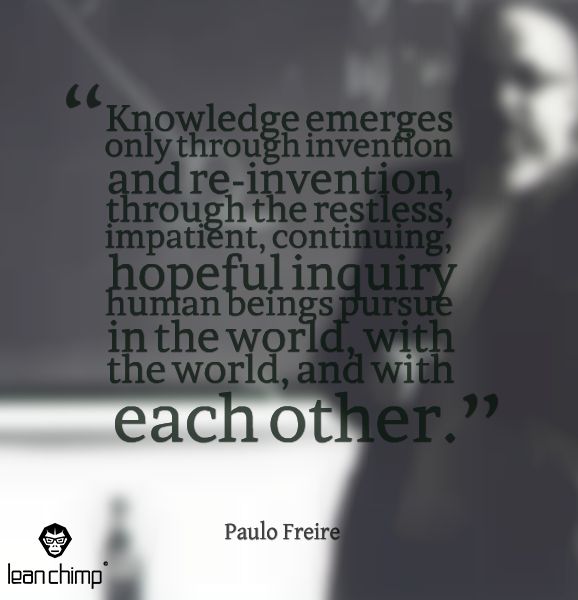
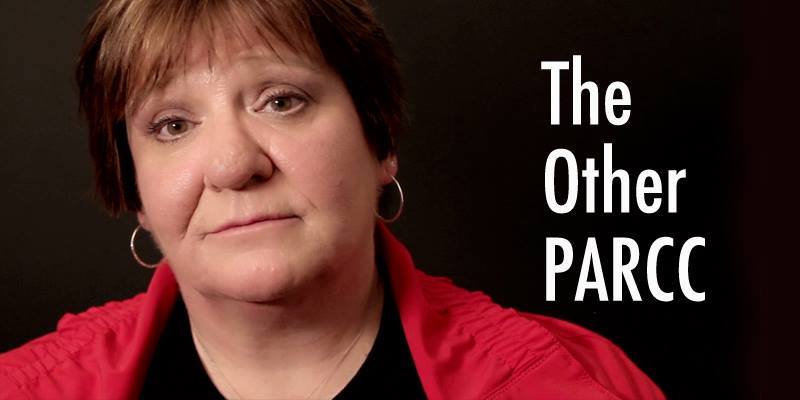
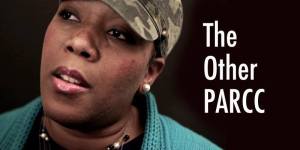

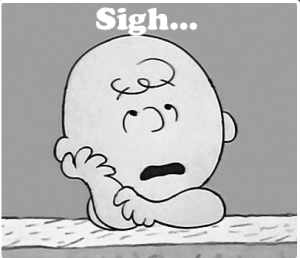
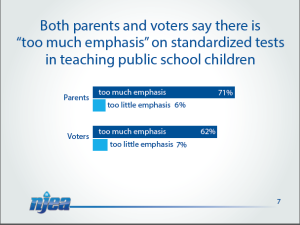
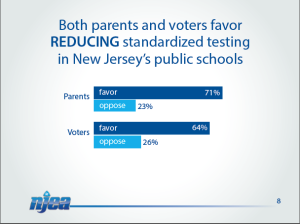
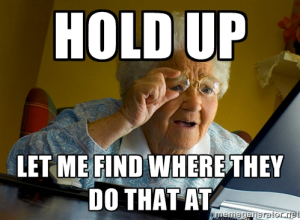
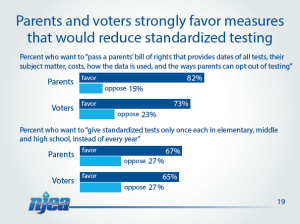
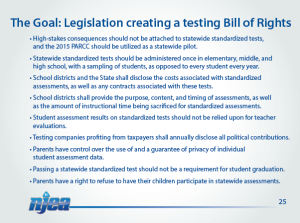


You must be logged in to post a comment.